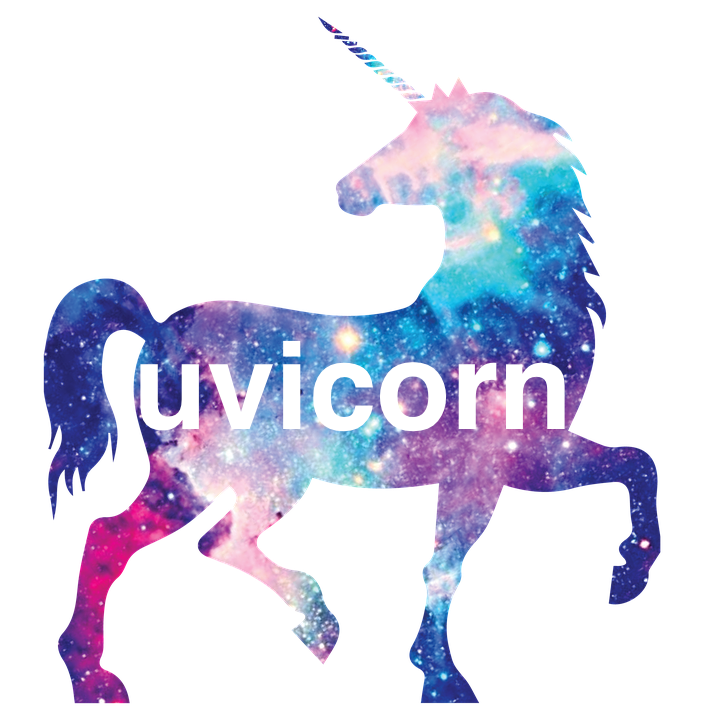An ASGI web server, for Python.
Documentation: https://www.uvicorn.org
Uvicorn is an ASGI web server implementation for Python.
Until recently Python has lacked a minimal low-level server/application interface for async frameworks. The ASGI specification fills this gap, and means we're now able to start building a common set of tooling usable across all async frameworks.
Uvicorn supports HTTP/1.1 and WebSockets.
Install using pip:
$ pip install uvicornThis will install uvicorn with minimal (pure Python) dependencies.
$ pip install 'uvicorn[standard]'This will install uvicorn with "Cython-based" dependencies (where possible) and other "optional extras".
In this context, "Cython-based" means the following:
- the event loop
uvloopwill be installed and used if possible. - the http protocol will be handled by
httptoolsif possible.
Moreover, "optional extras" means that:
- the websocket protocol will be handled by
websockets(should you want to usewsprotoyou'd need to install it manually) if possible. - the
--reloadflag in development mode will usewatchfiles. - windows users will have
coloramainstalled for the colored logs. python-dotenvwill be installed should you want to use the--env-fileoption.PyYAMLwill be installed to allow you to provide a.yamlfile to--log-config, if desired.
Create an application, in example.py:
async def app(scope, receive, send):
assert scope['type'] == 'http'
await send({
'type': 'http.response.start',
'status': 200,
'headers': [
(b'content-type', b'text/plain'),
],
})
await send({
'type': 'http.response.body',
'body': b'Hello, world!',
})Run the server:
$ uvicorn example:appMost well established Python Web frameworks started out as WSGI-based frameworks.
WSGI applications are a single, synchronous callable that takes a request and returns a response. This doesn’t allow for long-lived connections, like you get with long-poll HTTP or WebSocket connections, which WSGI doesn't support well.
Having an async concurrency model also allows for options such as lightweight background tasks, and can be less of a limiting factor for endpoints that have long periods being blocked on network I/O such as dealing with slow HTTP requests.
A strength of the ASGI protocol is that it decouples the server implementation from the application framework. This allows for an ecosystem of interoperating webservers and application frameworks.
The first ASGI server implementation, originally developed to power Django Channels, is the Daphne webserver.
It is run widely in production, and supports HTTP/1.1, HTTP/2, and WebSockets.
Any of the example applications given here can equally well be run using daphne instead.
$ pip install daphne
$ daphne app:App
Hypercorn was initially part of the Quart web framework, before being separated out into a standalone ASGI server.
Hypercorn supports HTTP/1.1, HTTP/2, and WebSockets.
It also supports the excellent trio async framework, as an alternative to asyncio.
$ pip install hypercorn
$ hypercorn app:App
Mangum is an adapter for using ASGI applications with AWS Lambda & API Gateway.
Uvicorn is BSD licensed code.
Designed & crafted with care.
— 🦄 —

